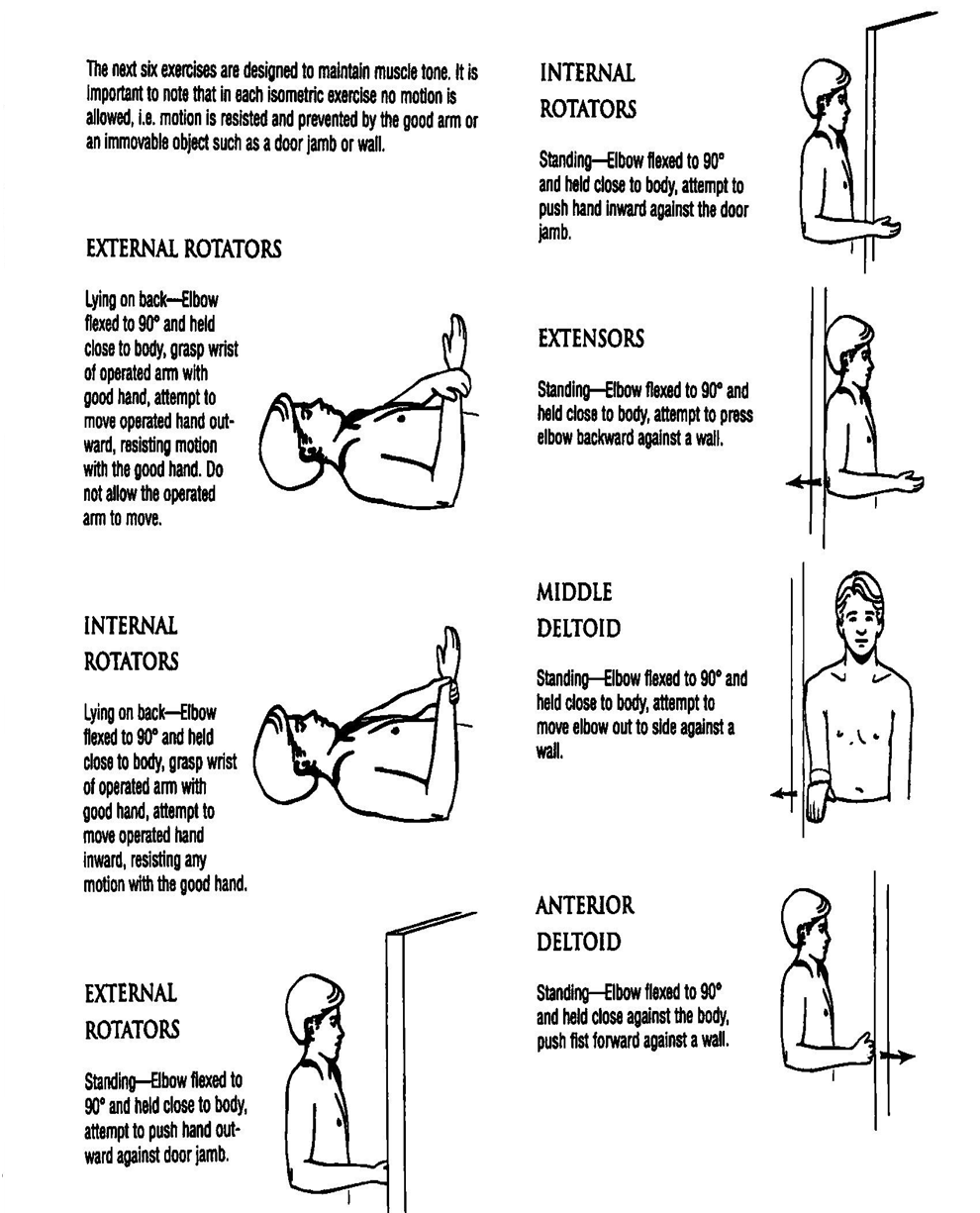
Isometric exercises can increase muscle strength but these increases are somewhat joint angle specific. However, when isometric exercises are performed against other types of resistance, high forces may be exerted making this type of exercise unsuitable early after any injury to the musculotendinous unit. Isometric exercises against resistance provided by the therapist are often preferred early in rehabilitation because they do not involve joint movement and the intensity of muscle contraction can be more closely monitored by the clinician. 5-8), immobilizing the patient with an isokinetic device or with a restraint, or when the therapist can exert sufficient force, by the patient pushing against unmoving resistance provided by the therapist. This can be achieved by pushing against an immovable object such as a wall ( Fig. To perform an isometric exercise, joint motion must be prevented.

Isometric exercises (also known as static exercises) are performed by increasing tension in a muscle while keeping its length constant.

Reiman, in Physical Rehabilitation, 2007 Isometric Muscle Strength Training.


 0 kommentar(er)
0 kommentar(er)
